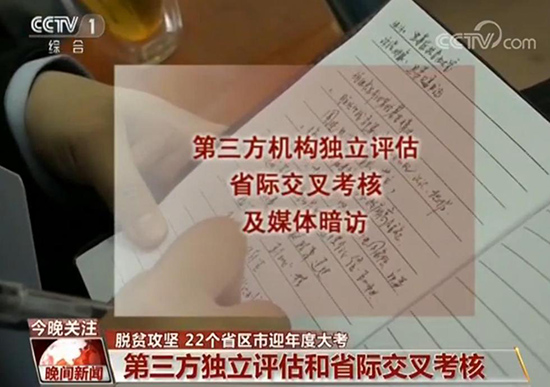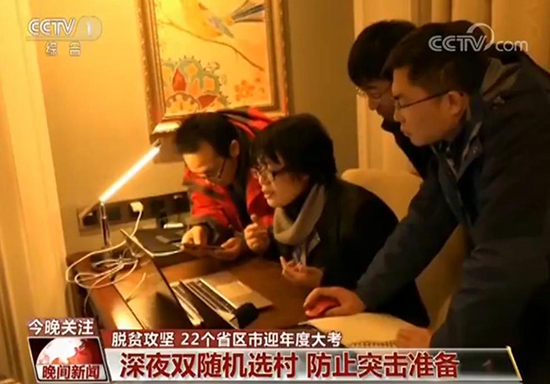

Last year, over 10 million people were lifted out of poverty in China. Is that a real figure, and what issues occurred during the work? To find answers to these questions, a tough inspection of the results of poverty reduction is being carried out in 22 western provinces and regions in China, cctv.com reported on Jan. 22.

The inspections are carried out by third-party independent organizations, cross-provincial inspection teams, and unannounced media groups.
Cross-provincial inspections will be carried out by members of the poverty alleviation and development work offices of the provinces, cities, and districts, as well as grassroots poverty alleviation staff.

For instance, Pu’er City in southwest China’s Yunnan province is inspected by officials with the housing and urban-rural development department, health and family planning commission, and the education department of northwest Shaanxi province.
An official with the housing and urban-rural development department of Shaanxi explains that people in Yunnan have much higher expectations on quality homes, because the place is frequently affected by earthquakes, and that’s why they’ve been selected to inspect Yunnan.
More than 1,500 professors and students from 20-plus universities and academic research institutions were chosen to act as third-party organizations. They are required to finish investigations on 20,000 rural households.
The inspection mechanism is always changing to guarantee fairness. For instance, a place to be inspected is set after a two-round selection, so that it will not be informed ahead of time to prepare for the inspection.
An official said the list of the villages to be inspected had once been disclosed ahead of time, giving some cadres time to assist poor households temporarily with the aim of getting through the inspection.
The unannounced media survey is new this year, adding more fairness to the inspection.
In 2016’s nationwide inspection, four prominent issues were found, including low-quality poverty alleviation results, untargeted assistance, and other issues.
In this year’s inspection, some farmers said they were not fully satisfied with the work of poverty-alleviation cadres.
 Fire brigade in Shanghai holds group wedding
Fire brigade in Shanghai holds group wedding Tourists enjoy ice sculptures in Datan Town, north China
Tourists enjoy ice sculptures in Datan Town, north China Sunset scenery of Dayan Pagoda in Xi'an
Sunset scenery of Dayan Pagoda in Xi'an Tourists have fun at scenic spot in Nanlong Town, NW China
Tourists have fun at scenic spot in Nanlong Town, NW China Harbin attracts tourists by making best use of ice in winter
Harbin attracts tourists by making best use of ice in winter In pics: FIS Alpine Ski Women's World Cup Slalom
In pics: FIS Alpine Ski Women's World Cup Slalom Black-necked cranes rest at reservoir in Lhunzhub County, Lhasa
Black-necked cranes rest at reservoir in Lhunzhub County, Lhasa China's FAST telescope will be available to foreign scientists in April
China's FAST telescope will be available to foreign scientists in April "She power" plays indispensable role in poverty alleviation
"She power" plays indispensable role in poverty alleviation Top 10 world news events of People's Daily in 2020
Top 10 world news events of People's Daily in 2020 Top 10 China news events of People's Daily in 2020
Top 10 China news events of People's Daily in 2020 Top 10 media buzzwords of 2020
Top 10 media buzzwords of 2020 Year-ender:10 major tourism stories of 2020
Year-ender:10 major tourism stories of 2020 No interference in Venezuelan issues
No interference in Venezuelan issues
 Biz prepares for trade spat
Biz prepares for trade spat
 Broadcasting Continent
Broadcasting Continent Australia wins Chinese CEOs as US loses
Australia wins Chinese CEOs as US loses